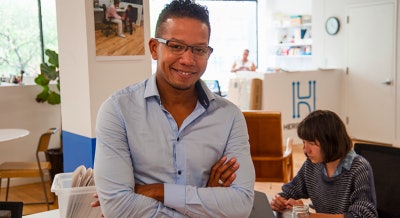Traditionally, America has viewed higher education as a means to achieve upward mobility and add value to the community. At the start of the COVID-19 pandemic, this avenue for prosperity was foundationally shaken, and many of the pervasive equity issues present in American higher education have become ever more prevalent.
These issues impacting higher education include:
An over-saturated education market;
Reduced high school graduation rates in economically advantaged families;
An increase in Black, Brown, and low-income high school graduation rates, whose students are searching for a quality institution where they can also feel at home;
A disconnect between institutions’ recruitment strategies and the shifting demographic landscape;
A rising concern correlating the cost and value of colleges and universities;
Rising operational cost and aging infrastructure;
Lack of adequate technological infrastructure;
The emergence of micro-degrees, certifications, and entities connecting students to jobs;
Increased local, state, and federal scrutiny and attention toward outcomes;
Concern over the financial viability for small, regional, and highly-specialized schools teetering on the brink of closure due to reduced state funding and declining enrollments. 
These conundra are the unfortunate reality in which many institutions find themselves in. The only way for higher education to prevail through these challenging times, and become a positive social-mobility model, is to adopt progressive, strategic models. We, as leaders of institutions, must be realistic about the institutions we oversee, our market position, and our external and internal operating environments in order to maintain our economic viability and educational impact. There are a variety of strategic models that must be considered and seriously pursued.
These strategic models include:
Mergers between places of higher education;
The development of associations and consortia;
Reimagined cost of attendance for students;
Restructured financial aid models that favor students, especially socio-economically disadvantaged students;
Inventive faculty models;
Partnerships with BIPOC organizations that support a pipeline from communities;
New and innovative academic programs and curricula that will prepare students for new and growing industries, and connect students to employment;
Bolstering academics while creating an important sense of place.
 Dr. Lessie Branch
Dr. Lessie BranchThe last strategic model is critical to the future viability of colleges and universities. Institutions must aim to produce a unique sense of place on their campus, with an inclusive campus culture, that is designed with a progressive strategic model as its core that serves all students. In a sense, these institutions need to become a “mini-city” where students learn and create everlasting experiences, like a child’s first visit to Disney World. This strategy is critical in smaller communities, like those in Maine, New Hampshire, and Vermont in the Northeast. Also, this strategy is critical in college towns and cities along the northern part of the US, where enrollments continue to decline, institutions continue to close, and young people’s desire to be in colder temperatures most of the year has dwindled. Setting a campus-wide focus on community and sense of place can be achieved in numerous ways.
Creating a sense of place includes:
Supporting student clubs and organizations;
Creating new areas of social engagement, including on-campus bars and restaurants;
Promoting intellectual curiosity, academic rigor, real-world preparation, cultural and racial diversity, authentic experiences, and social networking;
Hiring staff and faculty of color so students can see themselves represented
Embracing the campus as a career-centered/oriented destination that not only gives students experiences inside of the classroom, but also allows them to gain real-world work experiences;
Engaging in community/social issues. Colleges and universities must provide an opportunity for students to engage with the broader community.
Institutions of the future will look more racially and economically diverse, with students who are likely immigrants, previously homeless, come from foster homes, or were formerly incarcerated. The campus of the future embraces being a “mini city” where restaurants and bars are a regular feature similar to those found off-campus. Students will attend classes and work for corporate and nonprofit entities, and/or for small businesses on campus. Students will venture off campus to be engaged with and active in the local community. Social, economic, and political issues will be at the forefront of college students’ minds, and community engagement will become a critical tool to exercise one’s views on a wide range of current topics. Colleges and universities will need to completely reinvent themselves to meet the new demand in this new market economy. If our institutions fail to step up to this emerging challenge, we will cease to be a beacon of hope for social mobility and community change, and instead become a withered and forgotten relic of the past.
Dr. Edward Summers is president and CEO of The Thinkubator, a local innovation and workforce nonprofit organization.
Dr. Duleep Deosthale, is director of higher education consultancy at The Thinkubator
Dr. Lessie Branch is director of The Think Tank at The Thinkubator
Perrin Kenneedy is a higher education intern at The Thinkubator



















